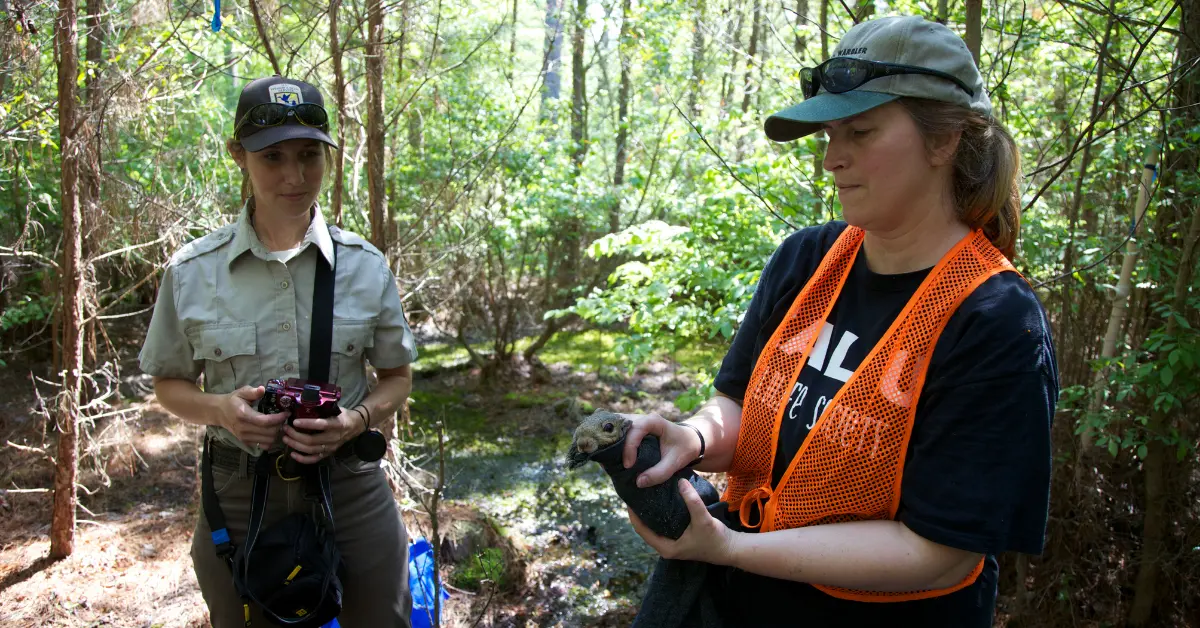Nestled on Maryland’s Eastern Shore, Blackwater National Wildlife Refuge stands as a testament to nature’s resilience and the importance of preserving pristine wetlands. Spanning over 28,000 acres, this ecological gem beckons nature enthusiasts, birdwatchers, and conservationists from across the globe. With its diverse habitats and remarkable wildlife, Blackwater is a true wildlife paradise.
The Haven for Birdwatchers
Blackwater National Wildlife Refuge has earned a reputation as one of the premier birdwatching destinations in North America. Its strategic location along the Atlantic Flyway, a major migratory route for birds, makes it a seasonal home to over 250 species of avian visitors.
Each fall, the refuge witnesses the spectacular arrival of thousands of waterfowl, including majestic tundra swans, snow geese, and countless ducks. This remarkable display of nature’s beauty attracts birdwatchers and photographers who come to witness the skies filled with the melodious calls and graceful flight of these migratory birds.
But it’s not just the migratory birds that make Blackwater exceptional. The refuge also provides a habitat for year-round residents like bald eagles, ospreys, and great blue herons. Birdwatchers can often spot these magnificent creatures perched on the branches of towering loblolly pines or gliding gracefully over the marshes.
Diverse Habitats
Blackwater National Wildlife Refuge’s unique ecosystem comprises tidal marshes, hardwood forests, freshwater ponds, and open fields. This diversity of habitats supports a wide range of wildlife, making it a haven for biodiversity.
The tidal marshes are perhaps the most iconic feature of the refuge. These vast expanses of saltwater and brackish marshes are home to countless species of fish, crabs, and mollusks. Additionally, they provide crucial nesting and feeding grounds for marsh birds like the elusive black rail and the endangered Delmarva Peninsula fox squirrel.
The refuge’s forests offer shelter to various mammals, including the elusive Delmarva Peninsula fox squirrel, white-tailed deer, and raccoons. Hikers and nature lovers can explore the picturesque trails that wind through these woodlands, providing an opportunity to spot wildlife in their natural habitat.
Conservation Efforts
Blackwater National Wildlife Refuge has a long history of dedicated conservation efforts. Established in 1933, it was created to protect and preserve the dwindling population of migratory waterfowl and their habitats. Since then, the refuge has played a pivotal role in the recovery of the once-endangered bald eagle, making it a symbol of successful conservation.
The refuge’s commitment to environmental preservation extends beyond its boundaries. It collaborates with nearby communities and agricultural partners to promote sustainable farming practices that minimize the impact on the Chesapeake Bay watershed.
Visiting Blackwater National Wildlife Refuge
Visiting Blackwater National Wildlife Refuge is a rewarding experience for anyone who appreciates the wonders of nature. The refuge offers a range of activities, including birdwatching, hiking, wildlife photography, and even kayaking on the water trails that wind through the marshes.
The Wildlife Drive, a 4.3-mile scenic route, provides an excellent way to explore the refuge by car. It offers numerous pull-off points and observation platforms, allowing visitors to enjoy breathtaking views and wildlife encounters.
Blackwater National Wildlife Refuge serves as a testament to the importance of preserving natural habitats and the diverse array of wildlife that relies on them. Its unique combination of tidal marshes, woodlands, and open waterways creates a rich and vibrant ecosystem that captivates all who visit. Whether you’re a dedicated birdwatcher, a nature enthusiast, or simply someone looking to reconnect with the natural world, Blackwater National Wildlife Refuge is a true wildlife paradise that should be on your must-visit list.











